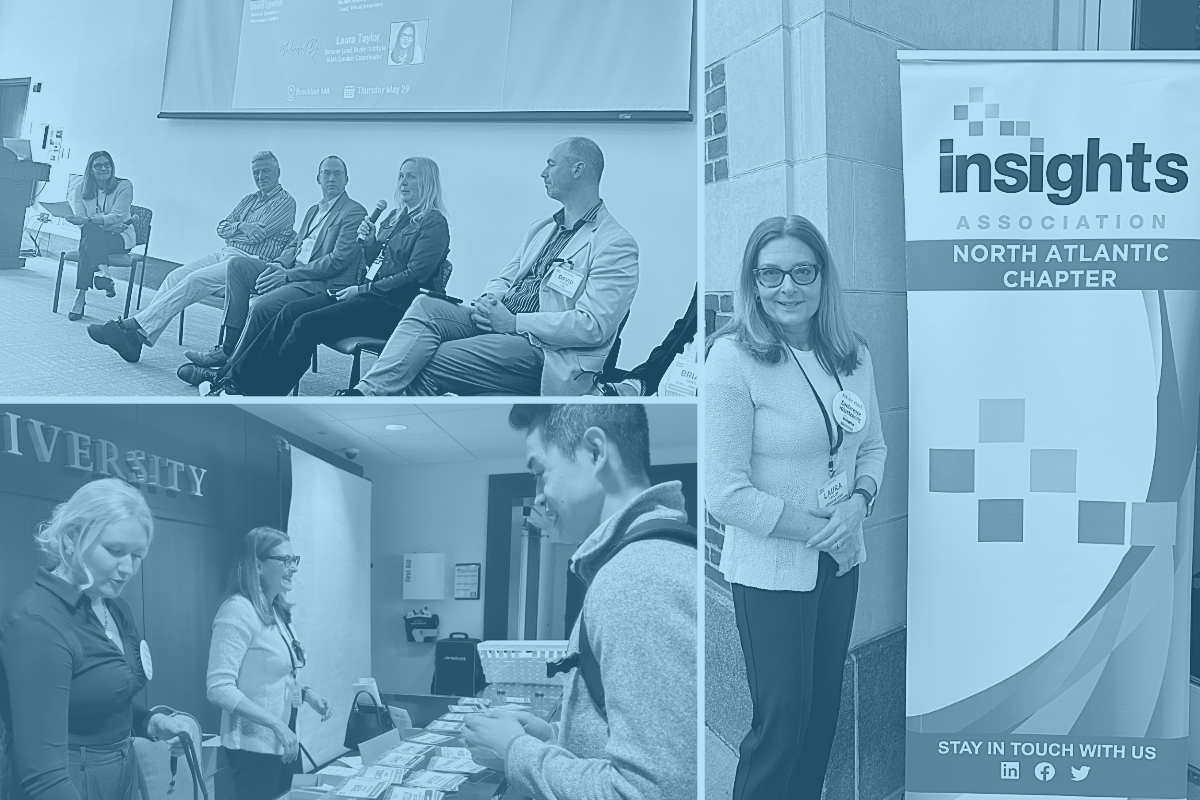
What is Customer Experience (Cx) Research?
by Mike Deinlein
Customer experience (CX) is no longer a brand differentiator. Customer experience IS the brand. These days, customers demand more personalized, empathetic, and cross-channel experiences, and only the brands that can deliver on these elevated customer expectations will grow market share in an increasingly customer-first and hyper-competitive future. 80% of customers consider the experience a company provides to be as important as its products and services1. As a result, organizations are charged with creating exceptional journeys that deepen customer loyalty and provide more opportunities for customers to interact with their products and services.
So, what does customer experience really mean today? Customer experience is the lasting impression formed by a customer through all interactions with your products, services, people, and businesses2. It is every interaction – good or bad – that either enhances or diminishes a customer’s affinity towards your brand. This definition acknowledges that customer experience is living and evolving – not static and momentary. Consequently, customer experience research strives to be equally dynamic and capture expectations, motivations, and moments that matter across the customer journey.
Simply stated, customer experience research is customer listening at every touchpoint with your brand. Fortunately, customer voices can be more readily heard with ever expanding signals and customer data at your disposal. By leveraging traditional surveys, qualitative insights, text analytics, and social listening, and linking those to experience, behavioral, and operational datapoints, companies can have a more complete view of customers.
If customer experience research is customer listening, then the goal of customer experience research is to identify needs, expectations, and friction points across all your customer touchpoints, so that you can prioritize and execute solutions that elevate their experience.
Companies that really listen in a structured, intentional manner can build a best-in-class customer experience insights platform through 6 core building blocks:
- Define your vision and aspiration
- Map the customer journey
- Integrate data across the journey
- Measure the overall relationship
- Predict customer needs and actions
- Act on data in real time
By following this framework, you can ensure you listen and act on customer feedback and elevate how customers interact with your brand.
DEFINE YOUR VISION AND ASPIRATION
Before establishing a CX market research platform, you need to define the customer experience you want to create. What will your brand stand for? What unique position do you want to own? What experiences will you create to support that brand identity? Only after you answer these questions should you move to how you measure the success of those journeys and experiences.
Key Activities & Deliverables:
-
- Stakeholder interviews
- Blueprinting & CX vision workshops
- Stakeholder alignment workshops
- Final vision statement
MAP THE CUSTOMER JOURNEY
Now that you have your vision, it’s time to map your customer journey to reflect that vision. Mapping the customer journey allows you to see every customer interaction, where there are friction points that frustrate your CX aspirations, and what “jobs to be done” customers desire throughout the journey. You can define the moments that matter and leverage direct feedback mechanisms to measure customer satisfaction in those moments. Mapping the journey also allows you to identify the indirect feedback signals that help measure journey success. Finally, the customer journey is the first step in delivering a service design blueprint that can align the internal processes, technology and data capabilities you need to deliver on your experience vision.
Key Activities & Deliverables:
-
- Jobs to be done research
- In-depth interviews
- Journey mapping
- Service design blueprints
INTEGRATE DATA ACROSS THE CUSTOMER JOURNEY
With your maps, you’re now ready to capture needs and expectations across the entire customer journey using three key data sources: direct feedback, indirect feedback, and observed behavioral data.
- Solicit direct feedback with event triggered surveys that measure your moments that matter, and always-on feedback surveys that allow customers to give you feedback on their time in their channel of choice.
- Go beyond traditional marketing research by incorporating indirect feedback like chat logs, social media, and customer service interactions and deploy AI powered text analytics to identify key themes.
- Overlay observed customer behaviors, digital clickstream data, point of sale, and CRM data with unified customer identities that can easily link back to your direct and indirect feedback mechanisms.
Linking all these data points provides you with a fully integrated customer database that serves as your source of truth for every customer across all your operational teams. No more data silos and uncoordinated customer outreach and service. This all-encompassing customer dataset also serves as your platform for predictive data analytics and machine learning, with more data at your fingertips.
To get the most out of your program, build in qualitative research to help build empathy that quantitative- and behavioral-only market research often overlooks. Hearing directly from your customers humanizes your data and provides a narrative that allows you to walk in their shoes and understand their pain points.
Key Activities & Deliverables:
-
- Event triggered surveys
- Text analytics
- Social listening
- Chat transcripts
- Identity resolution
- Qualitative Empathy Maps
- Needs Focus Groups
MEASURE THE OVERALL RELATIONSHIP
While customer experience is defined by the journey touchpoints, make sure you don’t lose the forest for the trees. Overall relationship surveys help you benchmark and identify broader improvement opportunities that transactional and in-the-moment data collection can miss. Setting up a Survey and Signal Architecture can help you link your journey feedback mechanisms with your overall relationship surveys to help drive greater actionability. And remember, by maintaining unified customer identities and a cross-functional customer database, you can find better linkages between your in-moment signals and your long-term customer relationship.
Key Activities & Deliverables:
-
- Customer Survey & Signal Architecture
- Relationship Key Driver Analysis
- Empathy In-Depth Interviews
PREDICT CUSTOMER NEEDS AND ACTIONS
You’ve now created a robust customer listening dataset and now it’s time to put it to work through custom insights, predictive modelling, and machine learning algorithms. Start by modelling your non-responders. Most of your customers will never take a survey. Leverage your data to predict their Net Promoter Score (NPS), Customer Satisfaction (CSAT) or Customer Effort Scores so you can measure your entire customer base, not just those who take surveys. Create customer churn models to understand the likelihood of attrition, model next best actions or products to grow your share of wallet or drive profitable behaviors, build dynamic attribution models to better allocate marketing spend. All of this is possible with a fully integrated customer database.
Key Activities & Deliverables:
-
- Predictive Machine Learning
- Attribution Modelling
- Next Best Action Modelling
ACT ON DATA IN REAL TIME
Understanding your customers is worthless if you don’t act on the insight. Ensure your customer experience research is connected to your business operations. Establish a regular cadence of action planning workshops to review insights and align teams on what they can do to improve the customer experience through a people, process, and technology lens. For in-the-moment activation, set up case management systems for your customer service teams to proactively contact customers when their expectations are not met. Allow your marketing teams to link to your journey orchestration platform to create in-the-moment personalized offers. And lastly, quantify the value of your improvements through customer lifetime value and customer retention metrics to prove to business executives that CX is worth the investment.
Key Activities & Deliverables:
-
- Action Planning and Resource Alignment
- Case Management
- Customer Service Automated Journeys
- Next Best Offer
Sound like a lot? It can be, but we are here to help. Burke has partnered with operational unit managers, quality leaders, and others across countless industries to deliver superior customer experiences. We have a full suite of products and solutions that can help you bring your CX strategy to life. To learn more about how you can build a best-in-class customer experience research program, contact our team.

Mike serves as VP, CX Solutions at Burke Inc. and consults with clients on agile CX technology use, the removal of customer data silos, and the effective utilization of integrated insights to drive better customer experiences for clients.
As always, you can follow Burke, Inc. on our LinkedIn, Twitter, Facebook and Instagram pages.
Sources:
Feature Image – ©A_B_C – stock.adobe.com
1. Salesforce.com. 2022. What Are Customer Expectations, and How Have They Changed?.
2. Carbone, Lewis & Haeckel, Stephan. (1994). Engineering Customer Experiences. Marketing Management.








